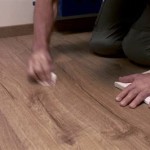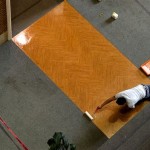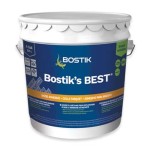Victorian Bathroom Flooring Ideas: A Guide to Authentic Aesthetics
The Victorian era, spanning from 1837 to 1901, witnessed a revolution in design and aesthetics, significantly impacting interior décor, particularly in bathrooms. Victorian bathrooms were characterized by opulence, detail, and a focus on hygiene, a stark contrast to previous eras. Flooring played a crucial role in establishing the overall ambiance, blending practicality with visual appeal. This article explores various Victorian bathroom flooring ideas, highlighting materials, patterns, and design considerations to achieve an authentic and historically accurate look.
Key Considerations for Victorian Bathroom Flooring
Before delving into specific flooring options, it is essential to understand the key characteristics of Victorian bathroom design. Victorian bathrooms often featured high ceilings, large windows, and ornate fixtures. The flooring needed to complement these elements, contributing to the room’s overall grandeur while also being durable and water-resistant. Factors such as budget, maintenance requirements, and the existing architectural style of the house should be carefully considered when selecting the appropriate flooring.
One primary consideration is water resistance. Victorian bathrooms, even with advancements in plumbing, still presented challenges related to moisture. Therefore, materials susceptible to water damage, such as untreated wood, were often avoided in favor of more resilient options like tile and stone. Additionally, the aesthetic value of the flooring was paramount. Victorian design emphasized intricate details and visually striking patterns, and the flooring was expected to contribute to this aesthetic.
Furthermore, the underfloor structure and its ability to support the chosen flooring material are critical. Heavier materials like marble or certain types of tile require a robust subfloor to prevent cracking or shifting. Older homes may need to have their subfloors reinforced to accommodate these heavier options. The existing heating system also influences flooring choices. Radiant heating, though a modern convenience, can be integrated beneath period-appropriate flooring to enhance comfort without compromising the historical accuracy of the design.
Popular Victorian Flooring Materials
Several materials were commonly used in Victorian bathrooms, each offering distinct advantages and visual characteristics. These materials were chosen for their durability, water resistance, and ability to contribute to the overall decorative scheme of the bathroom.
Encaustic Tiles: Encaustic tiles, also known as inlaid tiles, were a hallmark of Victorian flooring. These tiles are not merely surface-printed; the patterns are created by embedding different colored clays into the tile body. This results in a highly durable and visually striking surface that can withstand heavy foot traffic and resist fading. Encaustic tiles were available in a wide range of intricate geometric patterns, floral designs, and bold color combinations, allowing for endless customization possibilities.
The process of manufacturing encaustic tiles involved pressing different colored clays into molds to create the desired pattern. The tiles were then fired at high temperatures, resulting in a dense and durable material. Due to their complex manufacturing process, encaustic tiles were relatively expensive, but their longevity and aesthetic appeal made them a worthwhile investment for many Victorian homeowners. Original encaustic tile floors can still be found in many historic homes, showcasing their remarkable durability.
Marble: Marble, synonymous with luxury and elegance, was another popular choice for Victorian bathroom flooring. Its natural veining and polished surface added a touch of sophistication to any space. Marble is naturally water-resistant and can be easily cleaned, making it a practical option for bathrooms. However, marble is also a porous material and can be susceptible to staining if not properly sealed. Regular sealing is essential to maintain its beauty and prevent damage from spills and moisture.
Victorian bathrooms often featured marble in various forms, including large slabs for a seamless look and smaller tiles laid in geometric patterns. White marble was a particularly popular choice, often complemented by darker accents in black or green. The use of marble extended beyond the flooring, often incorporated into countertops, wainscoting, and even bathtubs, creating a cohesive and luxurious aesthetic.
Slate: Slate, a durable and naturally textured stone, offered a more rustic alternative to marble. Its earthy tones and non-slip surface made it a practical choice for bathrooms, particularly in areas prone to moisture. Slate is highly resistant to water damage and stains, making it a low-maintenance option for busy households. Victorian bathrooms often incorporated slate in a variety of shapes and sizes, from large rectangular slabs to small square tiles laid in a checkerboard pattern.
The natural variations in color and texture within slate added to its appeal, creating a unique and visually interesting surface. Slate was also a relatively affordable option compared to marble or encaustic tiles, making it accessible to a wider range of Victorian homeowners. Its durability and resistance to wear and tear ensured that slate floors could withstand decades of use without significant deterioration.
Ceramic Tiles: Ceramic tiles, a versatile and affordable option, gained popularity during the Victorian era. They were available in a wide range of colors, patterns, and sizes, allowing for endless design possibilities. Ceramic tiles are water-resistant, easy to clean, and relatively durable, making them a practical choice for bathrooms. Victorian bathrooms often featured ceramic tiles in geometric patterns, floral designs, and mosaic arrangements.
The development of new manufacturing techniques during the Victorian era made ceramic tiles more accessible and affordable than ever before. Mass production allowed for greater standardization and lower costs, making them a popular choice for both modest and luxurious bathrooms. Ceramic tiles were often used in conjunction with other materials, such as marble or slate, to create visually interesting and functional spaces.
Victorian Flooring Patterns and Designs
Beyond the selection of materials, the pattern and design of the flooring played a critical role in defining the Victorian aesthetic. Intricate geometric patterns, bold color combinations, and decorative motifs were common features of Victorian bathroom flooring.
Geometric Patterns: Geometric patterns, such as checkerboard, diamond, and herringbone, were a staple of Victorian flooring. These patterns added visual interest and a sense of formality to the space. Checkerboard patterns, typically using black and white tiles, were particularly popular for their timeless appeal and ability to complement a variety of design styles. Diamond patterns, created by alternating rows of diagonally laid tiles, added a touch of sophistication and depth to the floor. Herringbone patterns, resembling the bones of a fish, were another popular choice, often used to create a sense of movement and direction within the room.
The geometric patterns were not limited to simple shapes. Intricate tessellations and complex arrangements of tiles were also common, showcasing the craftsmanship and artistry of Victorian tile setters. The use of contrasting colors within the geometric patterns further enhanced their visual impact, creating a dynamic and engaging surface.
Floral Designs: Floral designs, inspired by the natural world, were another popular motif in Victorian bathroom flooring. These designs often featured stylized representations of flowers, leaves, and vines, adding a touch of elegance and femininity to the space. Floral patterns were typically created using encaustic tiles or ceramic mosaics, allowing for intricate details and vibrant color combinations.
The floral designs ranged from simple repeating patterns to elaborate pictorial compositions. Some bathrooms featured large-scale floral murals on the floor, creating a focal point and adding a sense of grandeur to the space. The use of floral designs reflected the Victorian interest in botany and the natural sciences, bringing the beauty of the outdoors inside.
Border Treatments: Borders played a significant role in framing and defining the edges of Victorian bathroom flooring. Intricate border patterns, often featuring geometric or floral motifs, added a finishing touch to the overall design. Borders could be created using contrasting colors, different tile sizes, or decorative inserts, adding visual interest and sophistication to the space.
The border treatments were not merely decorative; they also served a practical purpose by concealing the edges of the flooring and preventing water from seeping underneath. The choice of border pattern often complemented the overall design of the floor, creating a cohesive and harmonious aesthetic. Some bathrooms featured multiple layers of borders, with each layer adding a different element of detail and visual interest.
Mosaic Arrangements: Mosaic arrangements, created by combining small pieces of tile, glass, or stone, allowed for intricate and highly detailed designs. Mosaic floors were often used to create pictorial scenes, geometric patterns, or abstract compositions. The labor-intensive nature of mosaic work made it a relatively expensive option, but the resulting beauty and artistry made it a worthwhile investment for many Victorian homeowners.
Mosaic floors were typically created by skilled artisans who meticulously arranged each piece by hand. The use of different colored materials allowed for a wide range of visual effects, from subtle gradations of color to bold contrasts. Mosaic floors were often used in conjunction with other flooring materials, such as marble or ceramic tiles, to create a visually dynamic and luxurious space.
Modern Interpretations of Victorian Bathroom Flooring
While replicating a truly authentic Victorian bathroom can be challenging and expensive, modern materials and techniques allow for interpretations that capture the essence of the era while meeting contemporary needs. Modern ceramic and porcelain tiles can mimic the look of encaustic tiles, marble, and slate at a fraction of the cost. These materials offer greater durability, water resistance, and ease of maintenance compared to their historical counterparts.
Digital printing technology allows for the creation of ceramic and porcelain tiles with intricate geometric patterns and floral designs that closely resemble original Victorian patterns. These tiles can be used to recreate the checkerboard, diamond, herringbone, and mosaic arrangements that were common in Victorian bathrooms. Modern grout technologies also provide improved resistance to staining and mildew, making maintenance easier than ever before.
Furthermore, underfloor heating systems can be seamlessly integrated beneath modern Victorian-style flooring, providing added comfort without compromising the historical aesthetic. The combination of modern materials and historical design principles allows for the creation of bathrooms that are both beautiful and functional, capturing the spirit of the Victorian era while meeting the demands of contemporary living.

Victorian Ceramic Bathroom Tiles Design Ideas S House Garden

Inspiring Victorian Style Bathroom With A Modern Touch Talkdecor

75 Beautiful Victorian Bathroom With Ceramic Tiles Ideas And Designs July 2024 Houzz
:fill(white)/www.toppstiles.co.uk/static/uploads/2020/03/Amberley_Victorian-Design_Mobile.jpg?strip=all)
Victorian Tiles Style Trend Topps

How To Create A Victorian Style Bathroom 2024 Beginner S Guide

Traditional Bathroom Tile Ideas 20 Clever Ways To Achieve The Classic Look

Victorian Ceramic Bathroom Tiles Design Ideas S House Garden
:max_bytes(150000):strip_icc()/PhotoCreditGievesAnderson-e993d5275b48432fab442764bc06c859.jpg?strip=all)
20 Bathroom Floor Tile Ideas That Go Beyond The Basics

Bathroom Tile Ideas 23 Creative Ways With Color Pattern And Installations
:fill(white)/www.toppstiles.co.uk/static/uploads/2021/12/Victorian-Design-Blog1.jpg?strip=all)
Victorian Tiles Style Trend Topps
Related Posts








